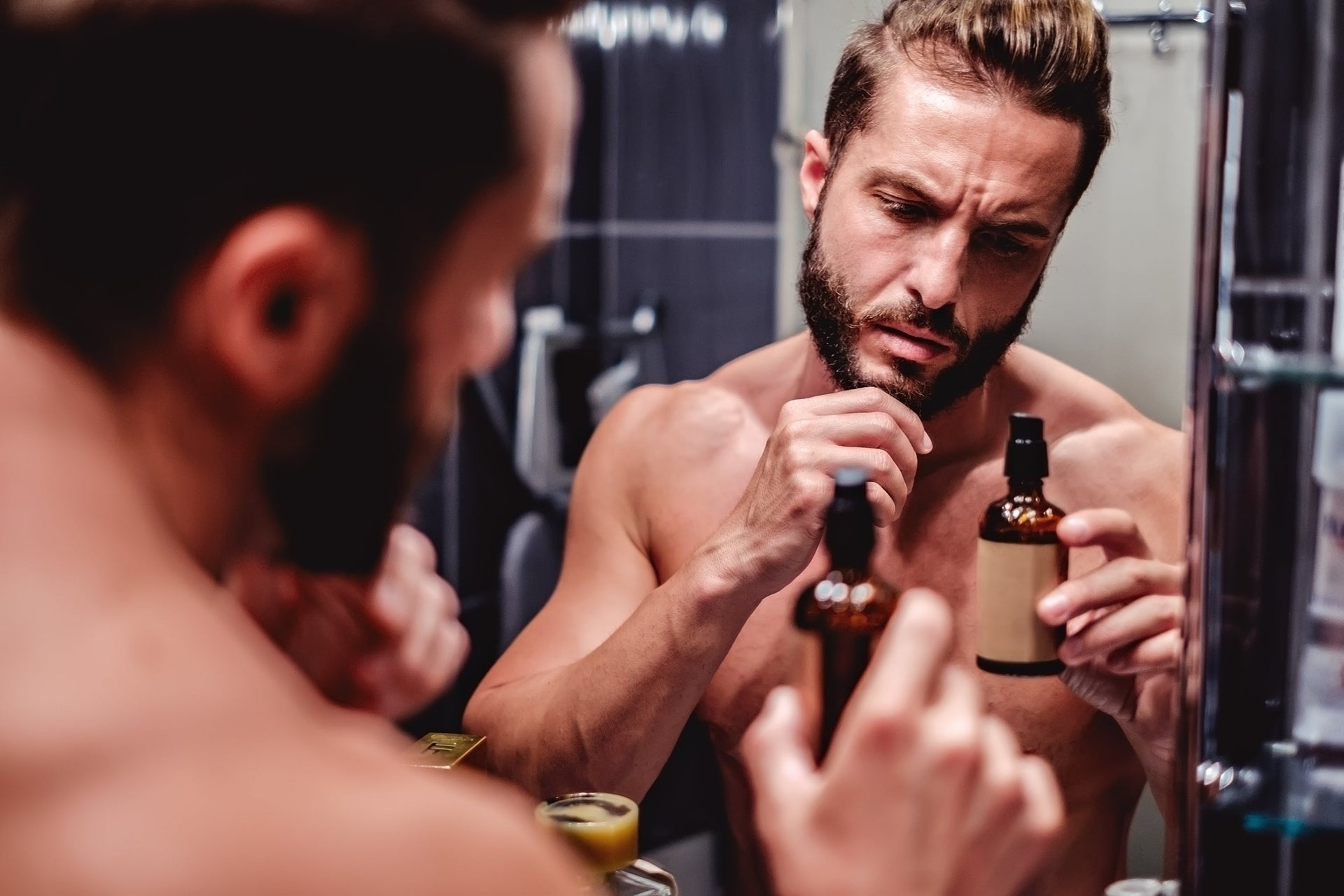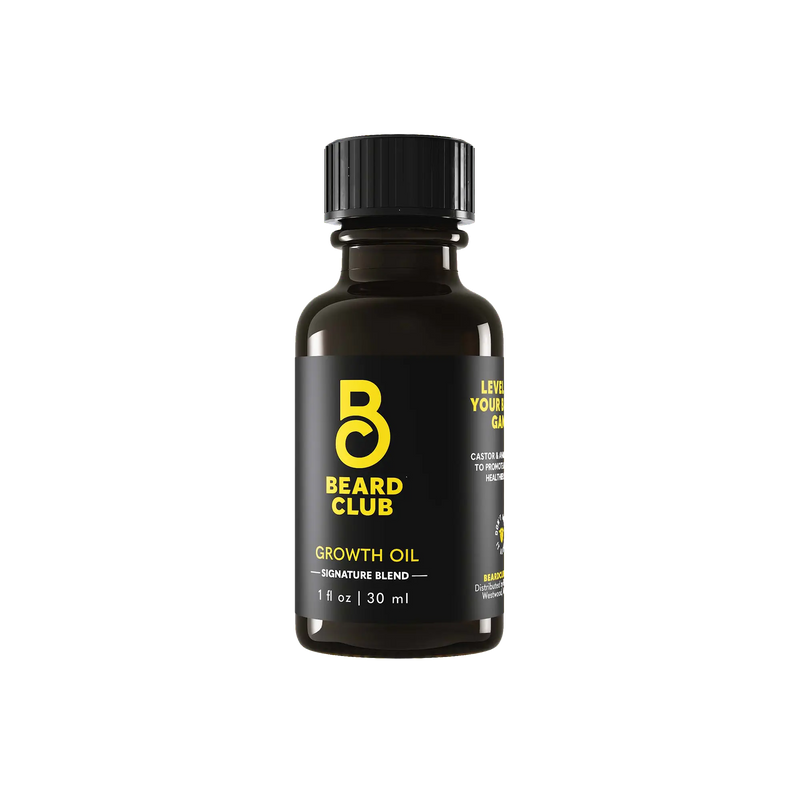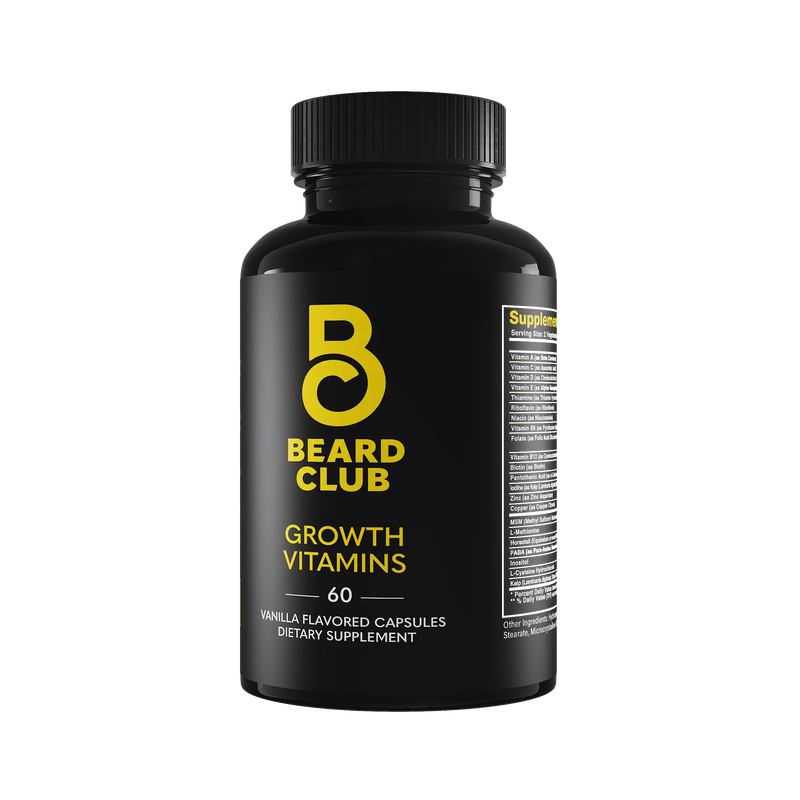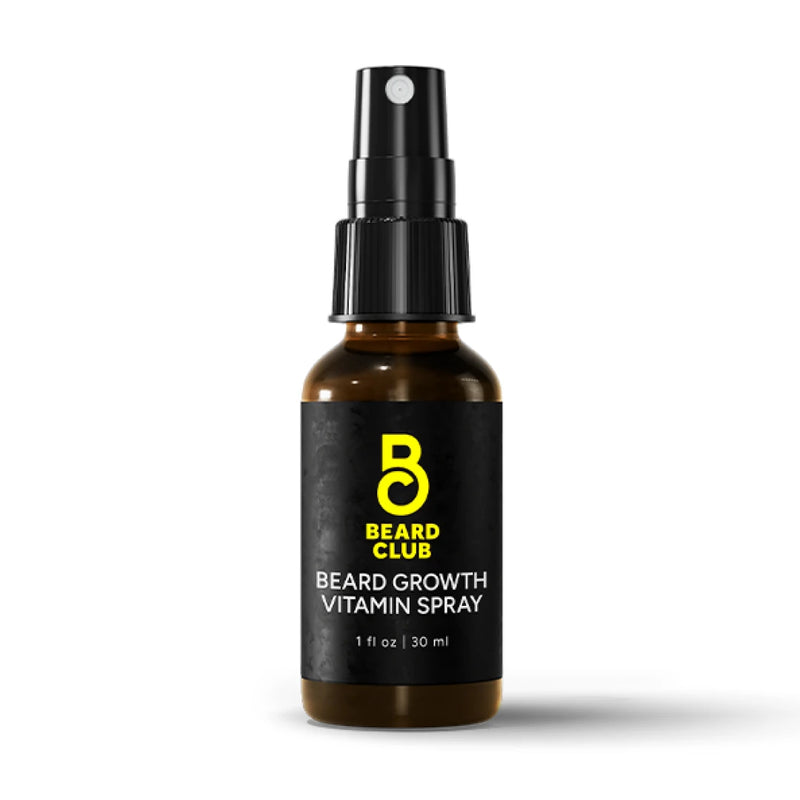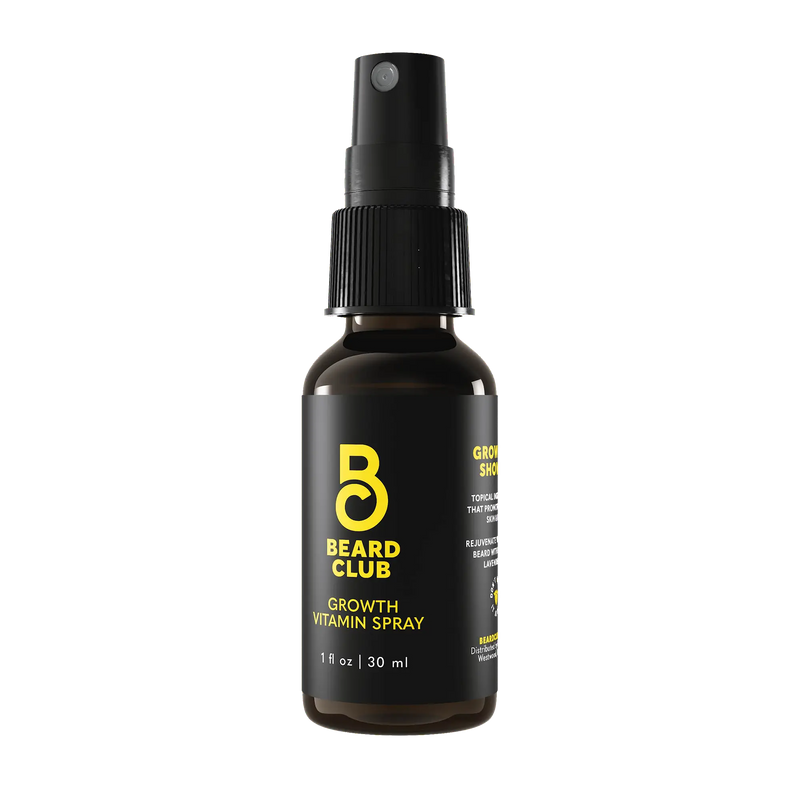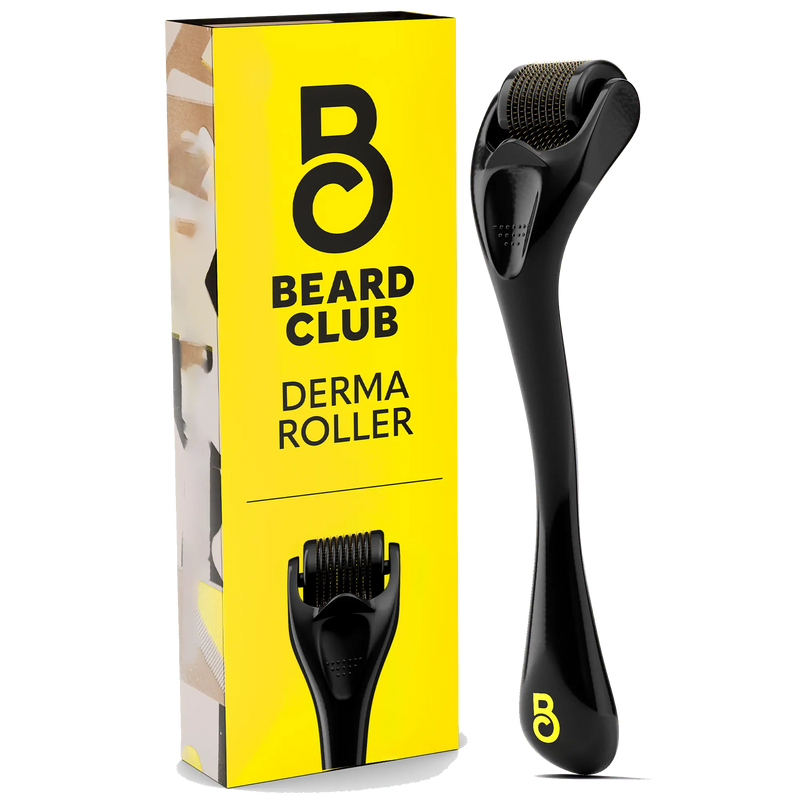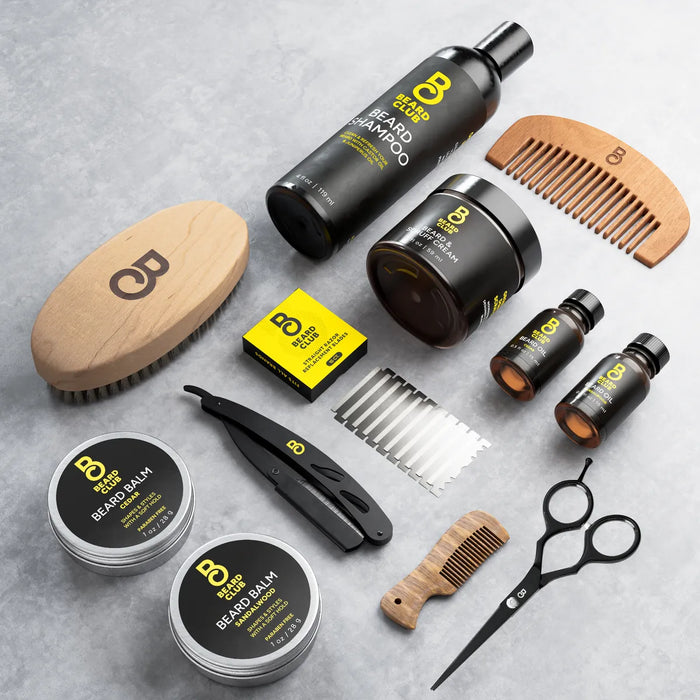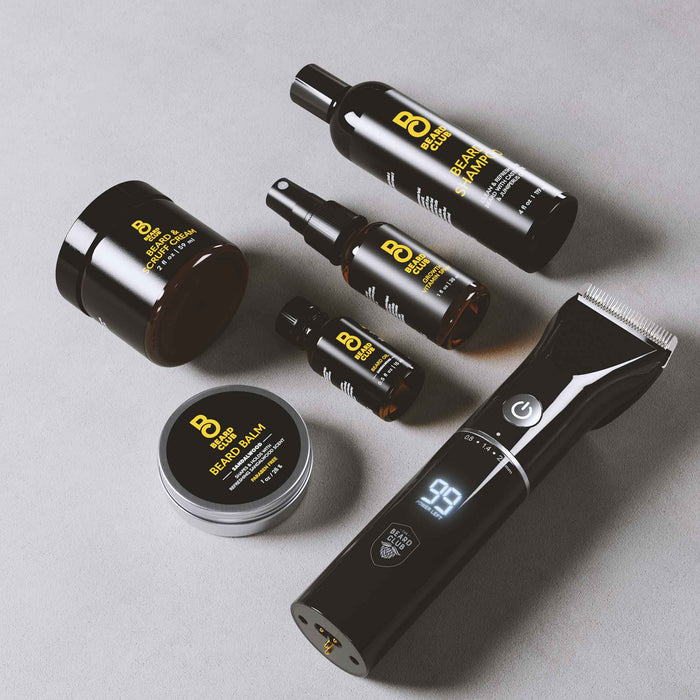Does Beard Oil Cause Acne? What to Know & How to Prevent
Here’s the truth: Beard oil doesn’t directly cause beard acne. But how you use it and what it’s made of can definitely make a difference. Also worth noting? Your diet, hydration, and more play a part in how your skin behaves. Beard care is just one piece of the puzzle.
If breakouts have crept in around the same time you started using beard oil, it’s worth taking a closer look. Beard oil isn't the enemy, but your skin might be reacting to something in the mix. It’s not always about what smells nice or comes in a sleek dropper bottle, the key is figuring out what your skin actually needs. Let’s jump in!
What Actually Causes Acne?
Before blaming your beard oil, it helps to understand what’s really behind breakouts and beard acne. Acne occurs when pores become clogged, typically due to a combination of excess oil (sebum), dead skin cells, sweat, and bacteria. When this buildup becomes trapped under the skin, it can cause inflammation and lead to the formation of blackheads, whiteheads, or painful cysts.
Your skin’s natural oil production, hormone levels, genetics, hygiene habits, and even environmental factors (like heat or pollution) can all influence how often you break out. Factors like diet, skincare products, and stress can also play a role.
So while beard oil alone isn’t likely to cause acne, certain ingredients can contribute if your skin is already acne-prone or overloaded. If you’re unsure about the source of your acne, consult your doctor or a dermatologist for proper acne treatment and guidance on the best skincare ingredients for you.
What’s in Your Beard Oil?

Beard oil might look simple, but a lot is going on in that little bottle. Most formulas include two key components: carrier oils (also referred to as base oils) and essential oils. And depending on the blend and your skin type, what’s inside can make all the difference.
The base oils form the foundation, making up the bulk of the product and delivering real hydration. These include ingredients like jojoba, argan, coconut, grapeseed, sunflower, or sweet almond oil. Some are light and fast-absorbing, while others are heavier and sit on the skin longer to provide more intense moisture.
Lighter oils like grapeseed, hemp seed, or sunflower seed absorb quickly and are less likely to clog pores. They're great for oily or acne-prone skin. While heavier oils, such as coconut or castor oil, offer deep conditioning, they can feel greasy or cause buildup if your skin is sensitive or not properly cleansed.
Then there are essential oils that are used in small amounts to add scent and, in some cases, provide skin benefits. While they smell great, essential oils can irritate sensitive skin, especially if overused or mixed with synthetic fragrances.
But ingredients alone don’t tell the whole story. How you use the product and how clean your skin is during application make just as much of a difference.
Proper Use: How Things Can Go Sideways
Beard oil is designed to hydrate both your facial hair and the skin underneath, but it needs a clear path to do its job. If you apply any beard products to unwashed skin or let them build up without brushing or cleansing, even the best formulas can cause acne breakouts or irritation.
Let’s rule out some simple mistakes that could be causing the flare-ups. With these small adjustments to your routine, your skin can calm down, and your beard game can continue to thrive.
Amount of Beard Oil: You could be using too much. Beard oil is concentrated, and most skin types only need 2–3 drops per application. Always check the bottle for recommended use and be aware that applying more won’t provide any additional benefits.
Proper Application: Beard oil is applied to your beard, but it should also reach the skin underneath. That’s the whole point. If it just sits on top of your hair follicles without getting absorbed, it can trap dirt, sweat, and dead skin. Hello, clogged pores.
Regular Beard Washing: You’re not washing your beard properly. Applying beard oil to dirty skin is like spraying cologne on a sweaty T-shirt. You’re just sealing in the funk. Clean your face and beard with a gentle beard cleanser. If you have oily skin, work in a dusty environment, or frequently hit the gym, daily washing is the best approach.
Quality Beard Oil: Some beard oils are made with low-grade ingredients that don’t play nice with your skin. Pay attention to ingredient labels. If you’re prone to breakouts despite the tips above, look for non-comedogenic oils and skip formulas that feel heavy or greasy.
Can Beard Oil Cause Ingrown Hairs?

While beard oil won’t cause ingrown hairs, it can make them worse if you’re skipping basic skin care. Ingrowns can look very similar to beard acne, but they are different. Ingrown hairs occur when facial hairs curl back into the skin.
A few grooming practices will keep things clear. Start with washing and brushing your beard daily. Remember, beard oil works best on clean, well-prepped skin. Trim regularity, using a quality trimmer or razor, to reduce the chance of beard hairs doubling back into your face. And finally, aim to gently exfoliate the beard area once a month to remove dead skin cells, which can contribute to ingrown hairs.
Tips to Avoid the Breakouts
Follow these application and hygiene tips to keep your skin fresh and get the most out of beard oil.
- Wash your beard with a gentle beard shampoo.
- Pat dry with a clean towel; avoid rubbing and scrubbing.
- Use 2–3 drops of beard oil. Seriously, that’s enough.
- Rub between your hands, then massage into your beard and down to the skin.
- Use a beard brush to distribute evenly and prevent buildup.
- Clean your sheets and pillowcase. Bacteria and oils can transfer.
- Never apply oil to a sweaty, dirty face. Wash up first.
Remember, beard oil works better on damp skin. Post-shower is prime time. Midday application after the gym or a long day out? Make sure you wash up first. Oil plus sweat is a recipe for clogged pores.
Choose Your Beard Oil Wisely

The better you understand what your skin needs, the more effective you can be with your skincare and beard care products. Skin type makes all the difference in how your face responds to various ingredients and grooming routines.
For example, castor oil and sweet almond oil are generally friendly to most skin types. They’re common in beard oils because they're a soft, nourishing finish that benefits both hair and skin. However, they may be too heavy for certain skin types, so let’s break down the different options below.
Best Beard Oil for Oily Skin
For oily skin types, opt for lightweight oils such as grapeseed, hemp seed, and sunflower. These absorb quickly and don’t clog pores. They’re rich in antioxidants, which may help regulate oil production and clear skin. Also, note that finding balance is important, as sometimes oily skin can be a result of dry skin, where your skin overproduces natural oils to compensate.
Best Beard Oil for Sensitive Skin
If your skin is sensitive, keep it simple. Go fragrance-free or products with a short ingredient list. Some of the best options include jojoba oil and argan oil, which closely mimic the skin’s natural sebum and absorb quickly without irritation.
Best Beard Oil for Acne-Prone Skin
Like sensitive skin, and depending on the source of your breakouts, you should look for minimal, non-comedogenic ingredients that are less likely to clog pores. Consider lightweight options like jojoba, argan oil, and tea tree oil, which are anti-inflammatory and may help reduce redness and blemishes.
Beard Oil for Dry Skin
For dry skin, richer oils like sweet almond or olive help lock in moisture, like conditioner for your beard and skin. Jojoba oil is also a great choice, as it’s rich in fatty acids and vitamins that help soothe and moisturize flaky skin or beard dandruff.
Oils to Avoid if You're Breaking Out
If you're struggling with beard pimples or sensitivity, consider taking a break from regular grooming products until you get it under control. You’ll want to steer clear of heavy oils, like coconut oil, which tends to clog pores. Lanolin can also be problematic, particularly for individuals with sensitive skin. And watch out for heavily fragranced oils or mystery blends that don’t list ingredients clearly.
Beard Oil Isn’t the Bad Guy
A little maintenance can go a long way toward smoother skin and a healthy beard. If you’re breaking out, don’t panic and pitch your bottle. Beard oil may not be the core of your problem. Your diet, hydration, and stress levels all play a part in how your skin behaves.
With the right blend, clean habits, and attention to your skin type, beard oil can actually improve your skin. It hydrates, reduces beard itch, tames dryness, and helps you grow a softer, healthier-looking beard. Just keep it clean, go easy on the drops, and pay attention to how your face reacts.
Now go groom like you mean it.
Sources:
The Benefits of Oils in Facial Skincare | Fresh
Itchiness, Acne, and Skin Irritation: How to Solve Your Facial Hair Problems | Yale Medicine
5 Important Reasons to Use a Facial Oil | 100% Pure
Should You Avoid Skin Care Products with Lanolin? | Vanicream
